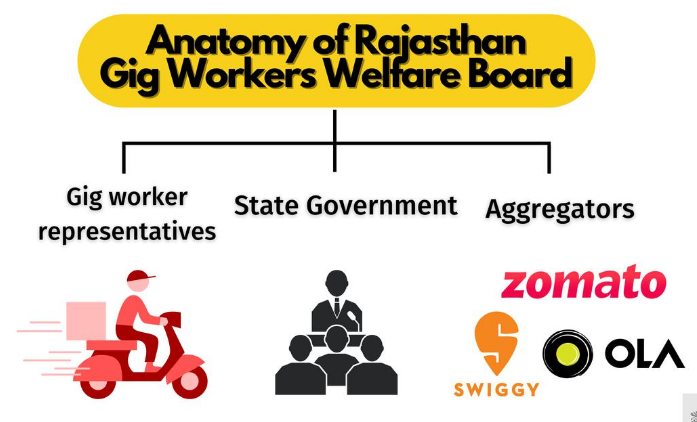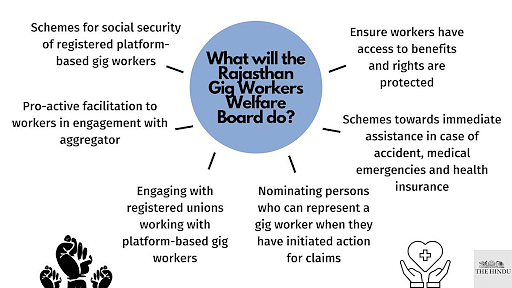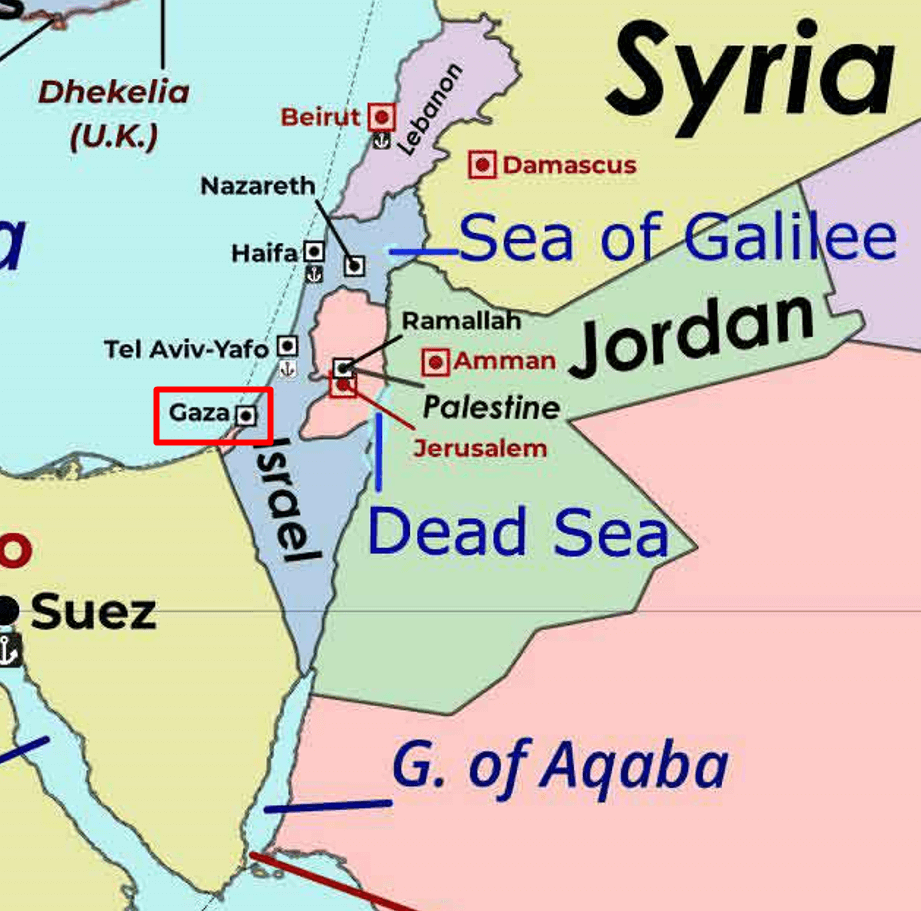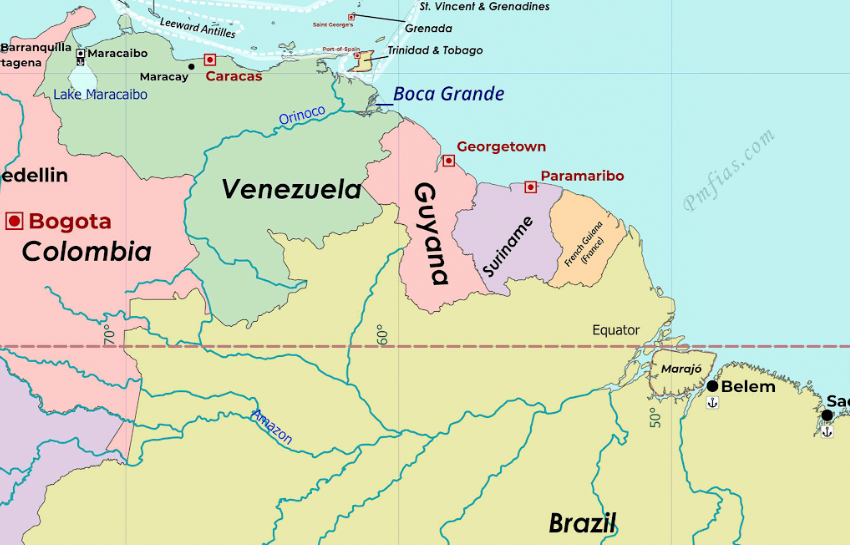
Current Affairs August 10, 2023: PM-JAY, Rohini Commission, CAG, NCBC, Gig Workers, Great Nicobar Project, CHIPS Act of the US, Space Debris Liability, Amazon Cooperation Treaty Organization
Subscribers of "Current Affairs" course can Download Daily Current Affairs in PDF/DOC
Subscribe to Never Miss an Important Update! Assured Discounts on New Products!
Must Join PMF IAS Telegram Channel & PMF IAS History Telegram Channel
{GS2 – MoHFW – Schemes – 2023/08/10} PM-JAY
- Context (TH): Comptroller and Auditor General (CAG) report noted that almost 7.5 lakh beneficiaries of Pradhan Mantri Jan Arogya Yojana (PM-JAY) were linked to a single mobile number.
- The Health Ministry explained that:
- AB-PMJAY identifies the beneficiary through Aadhaar identification.
- Mobile numbers did not play any role in verifying scheme beneficiaries.
Ayushman Bharat
- It was launched in 2018 to achieve the Universal Health Coverage (UHC) vision.
- It attempts to move from a sectoral and segmented approach to health service delivery to a comprehensive need-based health care service.
- Its components are:
- Health and Wellness Centres (HWCs)
- Pradhan Mantri Jan Arogya Yojana (PM-JAY)
-
Health Wellness Centre
- Currently, the existing 1.5 lakh Sub Centres and Primary Health Centres are being transformed into 1.5 lakh Health Wellness Centres (HWCs).
- These centres will deliver Comprehensive Primary Health Care that is universal and free.
- These centres would be equipped with facilities like telemedicine.
- Yoga lessons will also be offered in the vicinity of these centres.
Pradhan Mantri Jan Arogya Yojana (PM-JAY)
- It is the largest health assurance scheme in the world.
- It aims at providing a health cover of Rs. 5 lakhs per family per year to over 10 crores poor and vulnerable families that form the bottom 40% of the Indian population.
- The households included are based on the deprivation and occupational criteria of the Socio-Economic Caste Census 2011 (SECC 2011) for rural and urban areas, respectively.
- It is one significant step towards achieving Universal Health Coverage (UHC) and SDG3.

- The National Health Authority (MoH&FW) implements it.
- States/ UTs are advised to implement the scheme by a dedicated entity called State Health Agency.
Benefits
- It covers almost all secondary care and most tertiary care procedures.
- There is no restriction on the family size, age or gender.
- Benefits of the scheme are portable across the country (a beneficiary can visit any empanelled public or private hospital in India to avail cashless treatment).
- It covers up to 3 days of pre-hospitalization and 15 days of post-hospitalization expenses.
- A defined transport allowance per hospitalisation is included in this.
National Health Authority (NHA)
- NHA has been set up to implement PM-JAY.
- It is an attached office of the Ministry of Health and Family Welfare with full functional autonomy.
- NHA is governed by a Governing Board of 11 members chaired by the Union Minister for Health.
- It is headed by a CEO, an officer of the rank of Secretary.
- The CEO is the Ex-Office Member Secretary of the Governing Board.
{GS2 – Policy – OBCs – 2023/08/10} Rohini Commission
- Context (TH): The report of the Rohini Commission was submitted to President Droupadi Murmu.
- OBCs have 27% reservation by the central government in jobs and educational institutions.
- But the reservation benefits are utilised only by a handful of OBC sub-castes, and many deserving OBCs are deprived of the reservation benefits.
- To examine this, with the President’s approval, a five-member commission (Rohini Commission) headed by former CJ of Delhi HC G. Rohini was constituted in 2017 under Article 340 of the IC.
- It was tasked with sub-categorising the OBCs and equitable distribution of reserved benefits.
Article 340 of the IC
Sub-Categorisation
|
Commission’s Terms of References
- To examine the extent of inequitable distribution of reservation benefits among the OBC castes.
- To devise a scientific approach to sub-categorise 2,600+ caste groups in the Central OBC list.
- Identify the sub-castes, respective castes, or communities in the Central List of OBC.
- Rationalising the Central OBC list by suggesting corrections and replacements in spellings, etc.
Findings of the Commission
- Only ten OBC communities accounted for 24.95% of the jobs and educational seats.
- 97% of jobs and seats were occupied by just 25% of the OBC sub-castes.
- Approximately 37% of OBC communities had no representation in jobs and educational institutions.
- The total representation of these OBC sub-castes in recruitment and admissions was only 2.68%.
Backward Classes (BCs) CommissionsKaka Kalelkar Commission
Mandal Commission
|
{GS2 – Polity – Bodies – Constitutional – 2023/08/10} CAG
- Comptroller and Auditor-General (CAG) heads the Indian Audit and Accounts Department.
- He/she is the guardian of the public purse of the Union of India (the Centre and the states).
Appointment and Term of CAG
- CAG is appointed by the President by warrant under his/her hand and seal.
- CAG holds office for a period of six years or up to the age of 65 years, whichever is earlier.
- The IC does not provide for the eligibility of CAG for reappointment to the same office.
Removal
- CAG does not hold his office at the pleasure of the President. The IC prescribes his/her terms of office and removal.
- The removal of CAG involves a procedure similar to the removal of a Supreme Court Judge.
- That is, the President can remove CAG based on a resolution passed by both Houses of Parliament with a special majority, either on proven misbehaviour or incapacity.

Constitutional Provisions Related to the Office of CAG
Article 148 – Comptroller and Auditor-General (CAG) of India
- Article 148 provides for an independent office of the Comptroller and Auditor General of India.
Article 149 – Duties and Powers of the CAG
- CAG shall audit the accounts of the Union of India and any other authority or body as may be prescribed by any law made by Parliament.
|
Article 150 – Form of Accounts of the Union and The States
- The President, with advice from the CAG, decides how the accounts should be maintained.
Article 151 – Audit Reports
- CAG’s reports on Union accounts go to the President, who then shares them with the Parliament.
- CAG’s reports on State accounts are sent to the State Governor, who then shares them with the State Legislature.
Article 279
- Calculation of “net proceeds” is ascertained and certified by CAG, whose certificate is final.
Independence
- The administrative expenses of the office of CAG are charged to the Consolidated Fund of India (not subject to the vote of Parliament).
- CAG is provided with the security of tenure.
- CAG is not eligible for further office under GoI or the Government of any State after his term.
- His/her salary is equal to that of a judge of the Supreme Court.
- The Parliament determines his/her salary and other service conditions.
- His/her rights regarding leave of absence, pension, etc., can not be altered to his/her disadvantage.
- No minister can represent the CAG in Parliament (both Houses).
- No minister can be called upon to take any responsibility for any actions done by the office of CAG.
CAG is Not Truly Independent
Selection Process of CAG and His/Her Staff
CAG
- The Cabinet Secretary (functions directly under the PM) prepares a shortlist.
- The PM recommends one name from that list to the President.
- If the President approves the same, the appointment of the CAG is made.
- There are no specific laid down eligibility criteria or qualifications for shortlisting or selection.
Staff
- Indian Audit and Accounts Service is a Central Group ‘A’ service recruited by the UPSC.
- The other staff of CAG are also appointed by the executive.
Criticism
- The entire selection process proves a clear case of conflict of interest, and hence CAG is neither truly independent nor the guardian of the public purse in its true spirit.
Suggestion (Way Forward)
- If free and fair elections are the backbone of a democracy, an independent audit system is crucial for a country’s financial hygiene.
- Hence the appointment of the CAG can be on similar lines to the appointment of CEC and ECs.
- India can also take inspiration from the appointment process of CAG in the UK and CG in the US.
Appointment of CEC and ECs
National Audit Office (NAO)
Government Accountability Office (GAO)
|
Reforms Recommended by Vinod Rai for CAG
|
- Expand the coverage of CAG to include all entities that receive public funds or provide public goods, such as PRIs and govt-funded societies.
- PPPs are a popular medium for the execution of infrastructure projects worth millions of rupees, but they are not currently audited by the CAG that is no independent oversight of these projects.
- Introduce a Collegium-type mechanism to appoint a new CAG, similar to how the CVC is chosen, to ensure independence and impartiality.
Alleged Corruption Unearthed by CAG
|
{GS2 – Polity – Bodies – Constitutional – 2023/08/10} NCBC
- National Commission for Backward Classes (NCBC) was set up in 1993 by an act of Parliament.
- 102nd Constitutional Amendment Act of 2018 accorded constitutional status to the NCBC.
Composition of NCBC
- The Commission comprises a chairperson, a vice-chairperson and three other members.
- They are appointed by the President by warrant under his hand and seal.
- The President also determines their conditions of service and tenure of office.
NCBC Conditions of Service and Tenure Rules 2018
- Chairperson, Vice-chairperson and three members shall hold office for a term of three years.
- They are not eligible for appointment for more than two terms.
- The Chairperson shall be appointed from amongst eminent socio-political workers belonging to the socially and educationally backward classes (SEBCs).
- Of the Vice-Chairperson and all other Members, at least two shall be appointed from amongst persons belonging to the socially and educationally backward classes (SEBC).
- The NCBC must have at least one women member.
102nd Constitution Amendment Act, 2018
Article 338B
Article 342A
SC Judgement and 105th Constitutional Amendment Act
|
{GS2 – Welfare – MISC – 2023/08/11} Gig Workers
- The Rajasthan Platform Based Gig Workers (Registration and Welfare) Act 2023 proposes to set up a Social Security Fund by imposing a welfare tax of 1%-2% on every transaction a customer makes on apps like food delivery and ride-sharing.
- State government grants and contributions by gig workers will also be pooled into the fund.
What is the ‘GIG’ Economy?
- The term “Gig” originates from jazz musicians doing short-time-based performances called “Gigs” for a predetermined fee.
- The Gig economy involves the contractualisation of work, where the employer escapes from all responsibility except for determining the immediate task and arranging the payment.
- It is a labour market relying on temporary and part-time positions filled by independent contractors and freelancers.

Rajasthan Platform Based Gig Workers (Registration and Welfare) Act, 2023
- The Act is the first of its kind in India to provide social security to gig workers.
- It is inspired by the Hamal model and Mathadi Act principles.
- The Act provides gig workers with the following benefits:
- Registration: All gig workers must register with the government to access benefits.
- Social security: Gig workers will be eligible for various social security schemes, including health insurance, pension, and maternity benefits.
- Grievance redressal: The Act establishes a grievance redressal mechanism for gig workers to file complaints about non-payment of wages, unfair working conditions etc.


Hamal model
Mathadi Act
Mathadi Act principles
|
Issues Faced by Gig Workers
Lack of access to social security benefits
- Many gig workers didn’t have traditional forms of social security, (such as health insurance, pension, and maternity benefits) having no protection in the event of illness, injury, or unemployment.
Exploitation by aggregators
- Aggregators are the companies that connect gig workers with customers.
- They often take a cut of the worker’s earnings, and may also set performance targets.
- This can lead to exploitation, as may be forced to work long hours or in dangerous conditions.
Difficulty resolving grievances
- This is because the aggregators often have more power than the workers, and they may not be willing to listen to the worker’s concerns.
Lack of training and development opportunities
- Gig workers are often denied access to training and development opportunities. Thus it limits their ability to improve their skills and earn a better living.
Lack of rights
- Gig workers are often not given the same rights as other workers, such as the right to form unions and bargain collectively making it difficult for them to protect their interests.
- They are often subject to discrimination on the basis of gender, caste, religion, or disability.
Code on Social Security (CSS), 2020
- CSS 2020 aims to regulate the organized/unorganized (or any other) sectors and extend social security benefits, during sickness, maternity, disability, etc. to all employees and workers.
- It brings Gig Workers within the ambit of labour laws for the first time.
- The Code stipulates that Central and State Governments must frame suitable social security schemes,
- The Code also mandates the compulsory registration of all gig workers.
- Code establishes National Social Security Board by the Central government to monitor schemes.
RAISE Framework for Operationalizing the Code on Social Security (CoSS) 2020
|

India’s Gig Workforce To Reach 2.35 Crore By 2030: NITI Aayog Report
- Report title: India’s Booming Gig and Platform Economy
- Approximately 56% of fresh employment opportunities in India are generated by gig economy companies, covering both blue and white-collar workforces.
- The gig economy can create up to 90 million jobs in non-farm sectors, potentially contributing about 1.25% to the GDP over the long term.
- As India strives to become a $5 trillion economy by 2025, the gig economy will play a significant role in reducing income inequality and unemployment gaps.

{GS3 – Envi – Degradation – 2023/08/10} Great Nicobar Project
- Context (TH | TH | TH): Lakhs of trees will be felled for the mega project called the “Holistic Development of Great Nicobar Island” or the Great Nicobar Project.
- Under the project, a greenfield city has been proposed which includes four components:
- International Container Transhipment Terminal (ICTT)
- A greenfield international airport
- A gas and solar power plant
- A township
|
Importance of Great Nicobar Project
- The proposed port will allow Great Nicobar to participate in the regional and global maritime economy by becoming a major player in cargo transshipment.
- It will help in consolidating maritime security in the Indian Ocean Region.
Concerns Associated with Great Nicobar Project
Tectonically Sensitive Zone
- The Great Nicobar Iisland lies between the Bay of Bengal and the Andaman Sea in a tectonically sensitive zone.
- There are concerns relating to the tectonic volatility and disaster vulnerability of the islands, which have experienced nearly 444 earthquakes in the past 10 years.
- The tribal communities, who were displaced in the 2004 Tsunami, are still recovering from its impact.

Loss of Biodiversity
- The Great Nicobar Island was declared a Biosphere Reserve in 1989 and included in UNESCO’s Man and Biosphere Programme in 2013.
- The project will adversely impact on the rich biodiversity of the area and damage the habitats of endangered species.
- The project area is part of Coastal Regulation Zones-IA and IB.
Coastal Regulation Zones (CRZ)
|
Impact on Flora
- Lakhs of evergreen tropical trees will be felled and hectres of mangroves will be cleared.
Impact on Fauna
- India’s National Marine Turtle Action Plan mentioned Galathea Bay which lies under the project as one of the “Important Marine Turtle Habitats in India”.
- Galathea Bay is the most important nesting sites in the northern Indian Ocean for the Leatherback turtle (the world’s largest marine turtle). It is also a nesting ground for birds.
- The project will also threaten the endemic species such as the Nicobar shrew (CR), Nicobar long-tailed macaque (VU), Great Nicobar crested serpent eagle (NT), Nicobar paradise flycatcher and the Nicobar megapode (VU).
Leatherback Turtle
|
Tribal Area Encroachment
- Great Nicobar Island is designated as a tribal reserve under the Andaman and Nicobar Protection of Aboriginal Tribes Regulation, 1956.
- The island has been home to two isolated and indigenous tribes, Shompen (a Particularly Vulnerable Tribal Group) and Nicobaris.
- There are high concerns that the project will encroach the tribal areas despite being protected by legal provisions.
- Atready allegations have been raised that the project is violating Forest Rights Act, 2006 (FRA 2006) and Forest Conservation Act, 1980 (FCA 1980).
Great Nicobar Islands
In India, the tribal population makes up for 8.6% of the total population. Tribal people live in about 15% of the geographical area of the country. |
{GS3 – IE – Industry – 2023/08/11} CHIPS Act of the US and The Lessons for India
- Context (TH I TE): Creating Helpful Incentives to Produce Semiconductors (CHIPS) and Science Act 2022 of the US has completed one year.
- CHIPS Act authorises $52.7 billion over five years and aims to catalyse investments in the US’s domestic semiconductor manufacturing to boost innovation and national security.
Semiconductor and Semiconductor chip
|
Essential Features of the US’s CHIPS Act
- Cooperation and Coordination between government agencies (Whole-of-Government Approach)
- Workforce Development Plans
- Catalysing Private Sector Investments
- Futuristic Approach to Research and Innovation
Significance of the CHIPS Act
- Will help reduce the cost of semiconductors by increasing the supply of chips.
- Strengthens the semiconductor supply chain by self-sufficiency in chip production.
- Reduces the risk of disruptions to the supply of chips.
- Counter China’s dominance in the semiconductor industry. (China is currently the world’s largest producer of semiconductors and has a tight grip over the supply chain, using it to exert economic and political influence).
Lessons for India from the CHIPS Act
Whole-of-Government Approach
- Currently, most of the initiatives for Semiconductor are led by the Ministry of Electronics and Information Technology (MeitY):
- Manufacturing, assembly, and displays of semiconductors fall under the India Semiconductor Mission (ISM), a part of a non-profit created by MeitY.
- C-DAC, an R&D organisation under MeitY, oversees chip design.
- Ensuring the longevity of the semiconductor strategy, similar to the CHIPS Act, necessitates a comprehensive governmental approach that involves both the public and the private sectors.
Needs to Prioritise the Development of a Skilled Workforce Similar to the US
- MeitY has launched the Chips2Startup (C2S) initiative, partnering with 100+ universities.
- C2S aims to enhance the workforce by backing established quality training programs, similar to the US’s National Semiconductor Technology Center (NSTC) approach.
- Many private training centres in India are already training chip designers. C2S should concentrate on certifying the existing reputable programs instead of duplicating efforts on creating new ones.
Establishing a Strong System of Transparency and Accountability
- Similar to the US, India possesses evaluation guidelines for proposal viability.
- However, there’s room for improvement in terms of transparency.
- The government should make regular monthly progress reports for the semiconductor program.
- These reports will effectively manage expectations and enhance confidence in India’s plans.
A Forward-Looking Approach to Research and Innovation
- India’s semiconductor strategy doesn’t prioritise advanced manufacturing and packaging research because it is not in the picture of high-volume chip manufacturing.
- However, the lesson from the CHIPS Act is that India’s strategy needs to identify and invest in research on future technologies.
{GS3 – S&T – Space – 2023/08/10} Space Debris Liability
- Context (IE | IE): Space debris found on the shores of Australia is an unburnt part of the PSLV that launched a navigation satellite for the IRNSS constellation.


Space Debris
- Space debris (orbital debris or space junk) refers to non-functional, defunct, or abandoned objects of human space activities orbiting the Earth.
- It can be as large as a discarded rocket stage or as small as a microscopic chip of paint.
- Most space debris is in low Earth orbit (within 2,000 km of Earth’s surface) though some debris is in geostationary orbit (35,786 km above the Equator).
Threats from Space Debris
Collision Risk
- Space debris can damage satellites, spacecraft, and the International Space Station (ISS).
- Such collisions may disrupt communication, navigation, weather forecasting, etc.
- Astronauts are exposed to life-threatening danger if their spacecraft or habitats are struck by debris.

Cascading Debris Generation (Kessler Syndrome)
- As more debris accumulates in orbit, the likelihood of collisions increases. These collisions can generate even more fragments, leading to a cascading effect known as the Kessler Syndrome.
- This could make certain orbits extremely hazardous or unusable for future space missions.
Satellite and Mission Lifespan Reduction
- To avoid collisions with debris, operational satellites often need to perform orbital maneuvers, expending precious fuel and shortening their operational lifespans.
Space Debris Falling to Earth
- The threat to life and property from falling space junk is not negligible. Even though most of the debris falls in the oceans, large objects can be a threat to marine life and a source of pollution.
Efforts to Address the Issue of Space Debris
- Deorbiting: Designing satellites and rockets with mechanisms to ensure their controlled re-entry into Earth’s atmosphere at the end of their missions to burn up harmlessly.
- Debris Removal: Developing technologies to remove larger pieces of debris from orbit actively.
- Orbital Traffic Management: Implementing better tracking and communication systems to avoid collisions and manage traffic in congested space areas.
- Regulations: International regulations govern space debris falling back on the earth.
Convention on International Liability for Damage Caused by Space Objects
- Commonly known as the Space Liability Convention, it is an international treaty that establishes liability for damage caused by space objects launched by countries into outer space.
- It was adopted by the United Nations General Assembly in 1972.
- The treaty addresses the legal framework for compensation if a space object causes damage to Earth or other space objects.
- Most space-faring countries are signatories to the Convention, including India.
- This Convention complements the Outer Space Treaty, the framework guiding the behaviour of countries in space.
Key provisions of the Space Liability Convention
Liability for Damage
- The Convention makes the launching country liable to pay compensation for any damage caused by its space object on the earth or a flight in the air.
Scope of Liability
- Liability is limited to damage caused by a space object:
- In flight or during its return to Earth
- By collision in outer space
- The convention also covers damage caused by space debris.
Exemptions
- The launching state is exempted from liability in certain cases like
- If the damage was caused by a space object of a non-governmental entity
- If the launching state did not have “effective control” over the entity
Extent of Liability
- The Convention establishes a maximum limit of liability.
- Amount of liability depends on factors such as type of damage and circumstances of the incident.
Insurance and Financial Security
- The Convention encourages states to maintain insurance to cover liability claims.
Compensation Claim Made Till Now
- The compensation payment is made only once so far — when Canada sought damages from the then Soviet Union.

{Prelims – IR – Regional Organizations – 2023/08/11} Amazon Cooperation Treaty Organization (ACTO)
- Context (TH): Brazil’s Amazon Summit has ended with a roadmap to protect tropical rainforests.
- The Amazon Cooperation Treaty Organization (ACTO) is an intergovernmental organisation formed by eight countries.


- It was created in 1995 to strengthen the implementation of the Amazon Cooperation Treaty (ACT).
- The Permanent Secretariat was later established in Brasilia in 2002.
- It is the only socio-environmental block in Latin America.
Belem Declaration
- The Belem Declaration is a statement that was released during the Amazon Summit.
- It emphasises Indigenous knowledge and participation of Indigenous Peoples in conservation.
- The declaration promotes sustainable forest use and diverse economic solutions, in order to address concerns about deforestation and degradation in the Amazon region.
- The declaration also underlines the need to protect land rights to prevent deforestation.
Key Facts about Amazon Rainforest
- The Amazon rainforest is the world’s largest rainforest, covering 5.5 million square kilometres.
- The Amazon rainforest is also known as the “lungs of the Earth” because it produces more than 20% of the world’s oxygen.
- It is located in South America and spans across nine countries: Brazil, Bolivia, Peru, Ecuador, Colombia, Venezuela, Guyana, Suriname, and French Guiana.
- The Amazon River runs through the north of the rainforest and is the largest river in the world.
- It is home to around 400-500 indigenous Amerindian tribes, many of whom have never interacted with the outside world.
- Deforestation rates in the Amazon rainforest have been increasing in recent years, and it is estimated that we are making more than 137 species extinct daily.







![PMF IAS Environment for UPSC 2022-23 [paperback] PMF IAS [Nov 30, 2021]…](https://pmfias.b-cdn.net/wp-content/uploads/2024/04/pmfiasenvironmentforupsc2022-23paperbackpmfiasnov302021.jpg)


















